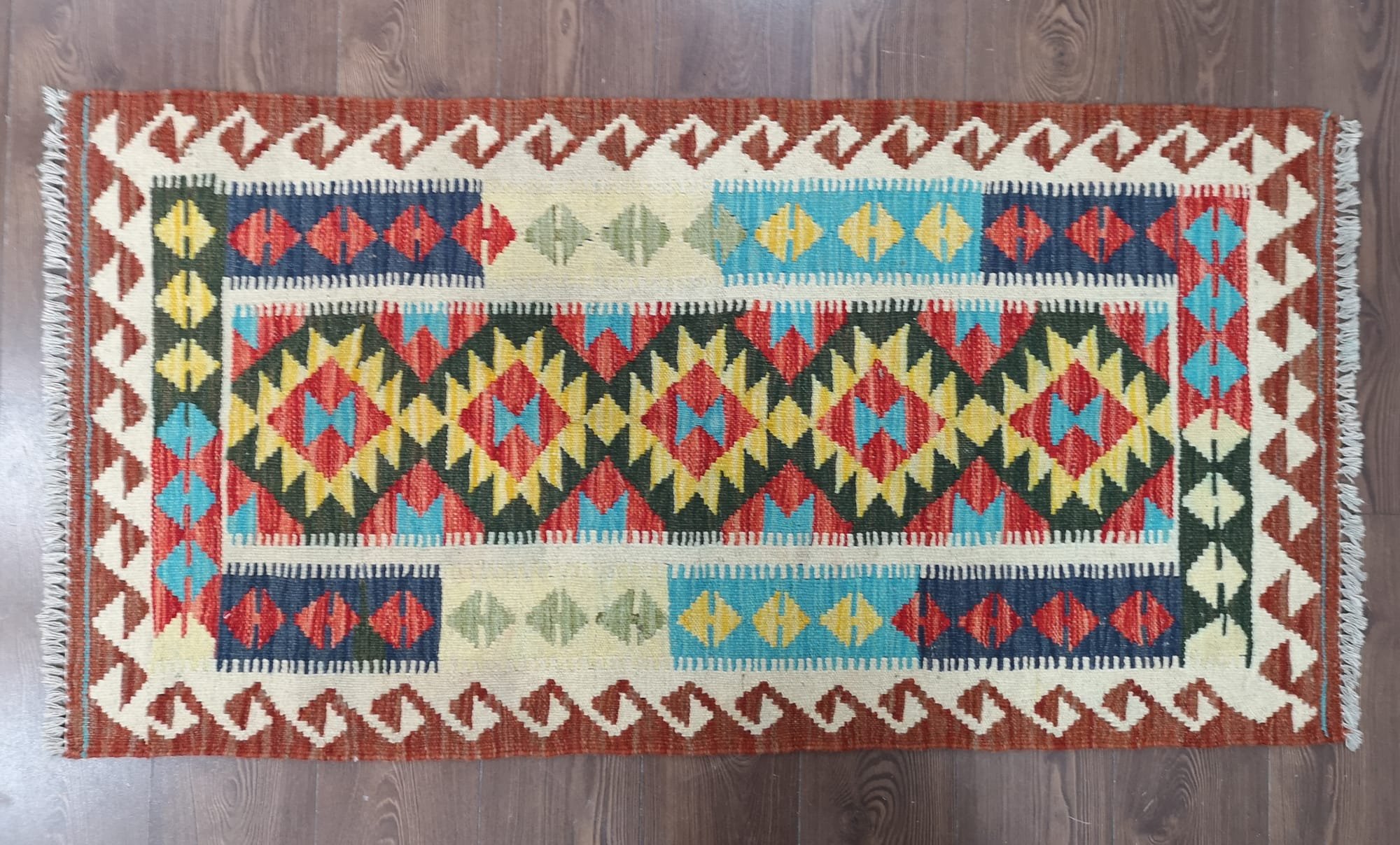Kilim (Gilum)
A kilim (Azerbaijani: Kilim کیلیم, Turkish: Kilim, Turkmen: Kilim, Persian: گلیم gelīm) is a flat tapestry-woven carpet or rug traditionally produced in countries of the former Persian Empire, Iran, Azerbaijan and Turkic countries of Central Asia.
Kilims are one the ancient items in traditional rugs weaving dating back to fourth or fifth century CE.
Kilims are a type of rug that is usually made from wool that is interwoven rather than knotted; this means that the surface is ‘flat’ instead of having a ‘pile’. The origins of Kilims are Turkish or Anatolian, although these types of rugs are often made in Afghanistan, Iran, India and the Caucasus. Vegetable dyed wool is the normal fibre used when making kilims and this is woven using woollen warps and wefts. In recent years weavers are replacing wool with cotton as this tends to give a stronger and more secure foundation for the rug.

